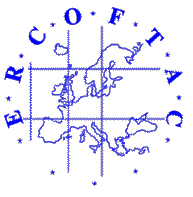 |
 |
 |
|
| Institute of Thermomechanics AS CR, v.v.i. | CTU in Prague Faculty of Mech. Engineering Dept. Tech. Mathematics | MIO Université du Sud Toulon Var - AMU - CNRS - IRD | Czech Pilot centre ERCOFTAC |
| Eddy Structure and Patterns in the Oceans and Atmospheres | |
| J. M. Redondo, S. Karimova | |
Abstract: | |
| The use of thematic maps derived from a combination of satellite sensors and images are validated between different methods and with on board observations, the topology of the detected features, such as spiral eddies [1, 2], fronts, Langmuir cells, etc.. May be even be used to predict diffusion and local pollution. It is also important to couple satellite information to the multiscale information available, which may be used to infer the turbulent parametrizations needed to predict pollutant and tracer dispersion in the ocean surface. In such a manner, more sophisticated data analysis such as the evaluation of integral length scales or local fractal dimensions of the sea surface appearance, and the detailed information of the position and sizes of the mesoscale dominant eddies provides very useful information on the sub-mesoscale ocean turbulence. The satellite-borne SAR and ASAR seems to be an excellent system not only to detect man-made oil spills and tension active slicks but it also detects dynamic features and the ocean eddies of different sizes. The study of the topology of the regions of different rugosity of the ocean, separating the vortical, elliptical, regions as well as the hyperbolic shear dominated areas, is also a convenient tool. The eddy structures of the Western Mediterranean were also investigated at different resolutions also by means of thermal images and altimetry data. A comparison of 1489 anticyclonic and 782 cyclonic eddy structures identified in the sea surface, to ASAR observations was performed. The (SST) imagery on an analysis of a 3-year period shows that only large anticyclonic eddies exceeding 70 km in diameter are long lived. This analysis, also applied to SAR and in advanced tracking of STT sequences, allows CPIV to extract velocity and vorticity local fields and relate spiral structure to vortex size. In the NW Mediterranean cyclonic eddies depend further on bathymetric effects. Due to the lack of resolution small spatial and temporal scales of such eddies and their non-geostrophic nature, it is difficult to compare basins of different size. | |
Keywords: | |
| spirals, sub mesoscale eddies, ocean vortices, Rossby, SAR | |
| Fulltext: PDF DOI: https://doi.org/10.14311/TPFM.2018.032 | |
| In Proceedings Topical Problems of Fluid Mechanics 2018, Prague, 2018 Edited by David Šimurda and Tomáš Bodnár, pp. 235-242ISBN 978-80-87012-65-9 (Print)ISSN 2336-5781 (Print) | |
 Login
Login Powered by
Imce 3.0 © 2014, Pavel Formánek, Institute of Thermomechanics AS CR, v.v.i. [generated: 0.0553s]
Powered by
Imce 3.0 © 2014, Pavel Formánek, Institute of Thermomechanics AS CR, v.v.i. [generated: 0.0553s]